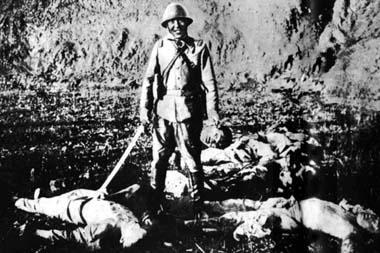Source: CCTV.com
04-28-2009 19:06
The Nanking Massacre, commonly known as the Rape of Nanking, refers to a six-week period following the capture of Nanking, then capital of the Republic of China, on December 9, 1937. International military tribunals convened at the end of World War II determined that, during this period, the Imperial Japanese Army committed atrocities such as rape, looting, arson and the execution of prisoners of war and civilians rising to the level of war crimes.
 |
Estimates of the death toll vary widely. Aside from the absence of accurate, comprehensive records of the killings, other contributors to the wide variance in estimates of the death toll include differences in definition of the geographical area, time period and nature of the killings to be counted. The Nanking Massacre can be defined narrowly to count only those killings happening within the Nanking Safety Zone, more broadly to include killings in the immediate environs of Nanking, or even more broadly to include the six counties around Nanjing. Similarly, the time period of the massacre can be limited to the six weeks following the fall of Nanking or it can be defined more broadly to include killings from the time the Japanese Army entered Jiangsu province in mid-November until late March 1938. Variations in estimates based on the nature of the killings revolve around the question of whether the killings of captured Chinese soldiers and suspected guerrillas constituted legitimate executions.
Editor:Zhao Yanchen
